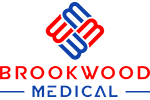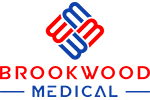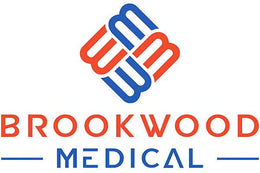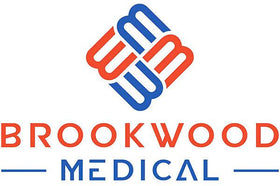Mask Mandates and Their Impact on Public Health

Overview
Mask mandates are essential for controlling the spread of airborne diseases, reducing transmission, and protecting vulnerable populations. They foster community responsibility, though they face opposition from individuals prioritizing personal freedom and misinformation. Studies show that mask mandates lead to lower infection rates and hospitalizations, while also boosting consumer confidence in businesses. Education and clear public messaging are crucial for compliance and understanding the science behind mask efficacy. As the pandemic evolves, ongoing research and adaptability of guidelines will shape the future of mask mandates in public health strategies.
Frequently Asked Questions
1. What are mask mandates and why are they important?
2. How do masks work to prevent disease transmission?
3. What types of masks are recommended for maximum protection?
4. How do mask mandates influence public behavior?
5. What role does education play in the effectiveness of mask mandates?
The ongoing dialogue around mask mandates has sparked considerable debate in communities across the United States and the world. As public health authorities strive to manage the spread of infectious diseases, particularly during pandemics, understanding the impact of such mandates is crucial. This article will explore the implications of mask mandates, particularly focusing on their effectiveness, public perception, and the role of products like 5PLY Protective Masks in safeguarding health.
The Importance of Mask Mandates
Mask mandates have emerged as a key strategy in controlling the spread of airborne diseases. By requiring individuals to wear masks in certain public spaces, health authorities aim to reduce transmission rates. Here’s a closer look at why these mandates are significant:
- Reducing Transmission: Masks have proven effective in preventing respiratory droplets, which are a primary means of spreading viruses. Mandates help enforce community-wide compliance.
- Protecting Vulnerable Populations: Face coverings protect not only the wearer but also those around them, particularly individuals with compromised immune systems or underlying health conditions.
- Community Responsibility: Mandates foster a sense of collective responsibility and encourage individuals to prioritize public health over personal convenience.
Understanding the Science Behind Mask Usage
Numerous studies have supported the use of masks as a means to mitigate the spread of diseases. The science behind their effectiveness can be categorized into several key elements:
How Masks Function
Face masks, especially those rated for higher particle filtration like the 5PLY Protective Masks, work by trapping respiratory droplets and reducing the distance they can travel when a person coughs, sneezes, or talks. This reduction in droplet dispersion can significantly lower the chances of disease transmission.
Types of Masks
While there are various types of masks available, it’s essential to recognize their effectiveness. Here’s a breakdown of the common types:
- Cloth Masks: These offer some level of protection but vary significantly in efficacy based on fabric density and fit.
- Surgical Masks: These are designed to offer larger droplet protection and are more effective than cloth masks.
- N95 and 5PLY Protective Masks: These provide the highest level of protection and are recommended for high-risk environments.
The Impact on Public Behavior
Mask mandates significantly influence community behavior and attitudes towards public health. The changes in behavior can be observed through various lenses:
Social Compliance and Cultural Norms
As mask mandates are implemented, societies often adapt their cultural norms. In communities where masks are seen as a protective measure, compliance rates are generally higher. Here are a few factors affecting social compliance:
- Public Messaging: Clear communication from health authorities about the benefits of wearing masks can increase compliance rates.
- Peer Pressure: Seeing others wearing masks can encourage individuals to comply, creating a social norm around mask use.
- Authority Influence: Leadership in communities advocating for mask-wearing can reinforce the message and sway public behavior.
Stigmatization and Opposition
Despite the scientific backing for masks, there are segments of the population that resist mandates. Common reasons for opposition include:
- Personal Freedom: Individuals who prioritize personal rights may view mandates as an infringement on their freedoms.
- Misinformation: The presence of misleading information can undermine the public's trust in health guidelines.
Public Perception of Mask Mandates
The public perception of mask mandates has evolved throughout the pandemic. Initial resistance in many areas has shifted towards a broader acceptance in light of new information and increased awareness of community health benefits.
Survey Results and Public Opinion
Surveys conducted during times of crisis often reveal varying levels of support for mask mandates. Factors influencing public opinion include:
- Infection Rates: Higher infection rates often correlate with increased support for mask mandates.
- Age and Demographics: Younger populations may be more resistant to mandates compared to older individuals who perceive themselves as more vulnerable.
Real-World Impacts of Mask Mandates
As local and state governments implemented mask mandates, the impacts on public health became increasingly evident.
Effectiveness in Controlling Disease Spread
Research indicates that communities enforcing mask mandates tend to experience a slower rate of infection. This is especially notable in comparison to areas without such mandates. Key findings from studies include:
- Reduced Case Numbers: Areas with mask mandates reported lower COVID-19 case numbers, demonstrating their effectiveness.
- Decreased Hospitalizations: With fewer transmissions, hospitals experienced decreased strain, allowing for better care of patients.
Economic Impact
While some argue that mandates can hurt local businesses, the opposite may be true. Mask-wearing provides reassurance to customers about safety, reopening public spaces, and allowing businesses to thrive. Key points include:
- Consumer Confidence: When people feel safe, they’re more likely to patronize local businesses.
- Business Operations: Employers can maintain operations with minimal disruption due to illness when employees adhere to safety protocols like mask-wearing.
The Role of Education in Mask Mandates
Education plays a vital role in the success of mask mandates. People who understand the science of mask efficacy are more likely to comply with mandates. Strategies include:
Public Information Campaigns
Governments and health organizations can launch comprehensive campaigns to educate the public. These campaigns can include:
- Infographics: Simple visuals that explain why masks are essential.
- Workshops: Community events focusing on how to properly use and care for masks, including options like 5PLY Protective Masks.
Engaging Health Professionals
Healthcare workers can be ambassadors for public health messages. When trusted figures advocate for mask use, it enhances compliance.
The Future of Mask Mandates
As we move forward, the landscape of mask usage and mandates will likely continue to evolve. Factors impacting the future of mask mandates include:
Ongoing Research
New research will continue to help clarify the role of masks in public health. Emerging findings will inform how communities create guidelines moving forward.
Adaptability of Guidelines
As infection rates fluctuate, mask mandates may be adjusted to respond to public health needs. Being adaptable ensures that mandates effectively address real-time threats.
Thinking Beyond the Mask
While masks have played a pivotal role in public health responses, it’s essential to remember that they are just one aspect of a comprehensive strategy. Public health officials encourage a multi-faceted approach that includes:
- Vaccination: Encouraging vaccinations as an effective means of controlling disease spread.
- Hygiene Practices: Emphasizing the importance of good hygiene, including regular hand washing and the use of hand sanitizers.
- Social Distancing: Continuing to maintain safe distances in crowded spaces.
As communities adapt to ongoing challenges, understanding the intricacies of mask mandates will be essential. It opens the door to better public health responses and encourages collective responsibility among individuals.
In summary, mask mandates have profoundly influenced public health dynamics. By elevating awareness of their importance and the science supporting mask efficacy—especially with products like 5PLY Protective Masks—communities can enhance their health resilience. Embracing continuous dialogue and education around mask use is crucial as we navigate this ever-evolving landscape. Let's work together toward a healthier future.
Linked Product

KN95 Face Masks, CE Certified, 5PLY, Protective Mask, K95
The KN95 Face Masks feature a 5PLY construction that effectively filters out at least 95% of airborne particles, making them suitable for various environments, from healthcare settings to everyday public use. CE certified, these masks meet stringent European safety standards, ensuring reliability in protection. Their snug fit enhances safety by minimizing gaps, providing users with a practical solution for maintaining health in crowded spaces.
View Product





